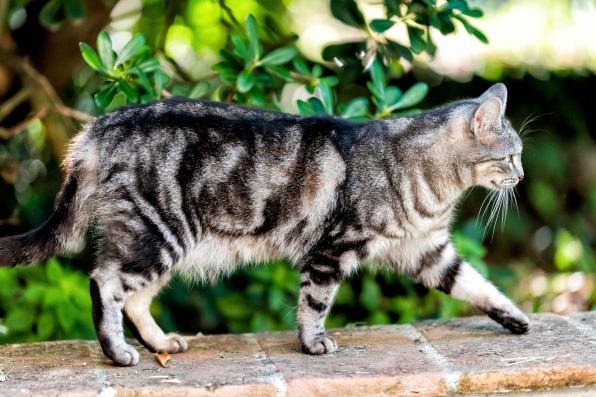All Cats Develop Primordial Pouches To Protect Their Abdomens, And There Are Three Main Theories As To Why

Your cat may have a big belly that seems saggy or swings when it walks, but that doesn’t mean your cat is overweight.
All cats have them—they’re officially known as primordial pouches, and they vary in size according to breed, genetics, age, and individual cats.
A primordial pouch is technically not a tummy; it’s a bit of skin, fur, and fat that serves as a protective layer for a cat’s abdomen.
According to the American Veterinary Medical Association, these pouches are healthy and perfectly normal. They do not cause any discomfort or medical issues.
Over the years, experts have tried to figure out why cats have a big pouch surrounding their tummies. There are three main theories as to why cats have primordial pouches.
“One that I find convincing is that cats have the extra fat to protect their internal organs from trauma such as those caused when fighting with other cats,” said Dr. Cristina Bustamante, an associate veterinarian with Caring Hands Animal Hospital in Florida.
Another theory is that the pouch enables cats to run faster. The stretchy skin enhances flexibility, giving felines the ability to take longer strides, which will help them escape from predators or catch prey more easily.
The third possibility for the pouch’s function is that it acts as an extra space for storing food after eating a large meal. Cats in the wild do not receive daily feedings twice a day like pet cats do.
They eat whenever the opportunity comes up, so they may store fat in their pouches from previous meals to provide them with days of sustenance in case they can’t find any more food right away.

Kristina Blokhin – stock.adobe.com – illustrative purposes only, not the actual cat
Domestic cats aren’t the only felines with primordial pouches. Big cats like lions and tigers have them, too.
In both male and female house cats, the pouch starts to develop around six months of age. Young kittens do not have them.
It’s important to be able to tell the difference between a primordial pouch and a big belly from being overweight.
An obese cat can develop diabetes, heart problems, and hypertension. Obesity can also increase the risk of arthritis and certain types of cancer.
The best way to determine if your pet is at a healthy weight is to observe the shape of your cat. When you’re standing above a cat with normal weight, you should be able to spot an indentation at the hips, which is the cat’s waist.
Obese cats have rounder bodies. The belly of an obese cat starts at the top of the underside and continues all the way down. If you have to press hard to feel your cat’s ribs, that may be a sign that your pet is overweight.
To keep your cat healthy, feed it a low-fat, high-fiber diet and make sure it gets 15 minutes of exercise per day.
Sign up for Chip Chick’s newsletter and get stories like this delivered to your inbox.
More About:Animals





